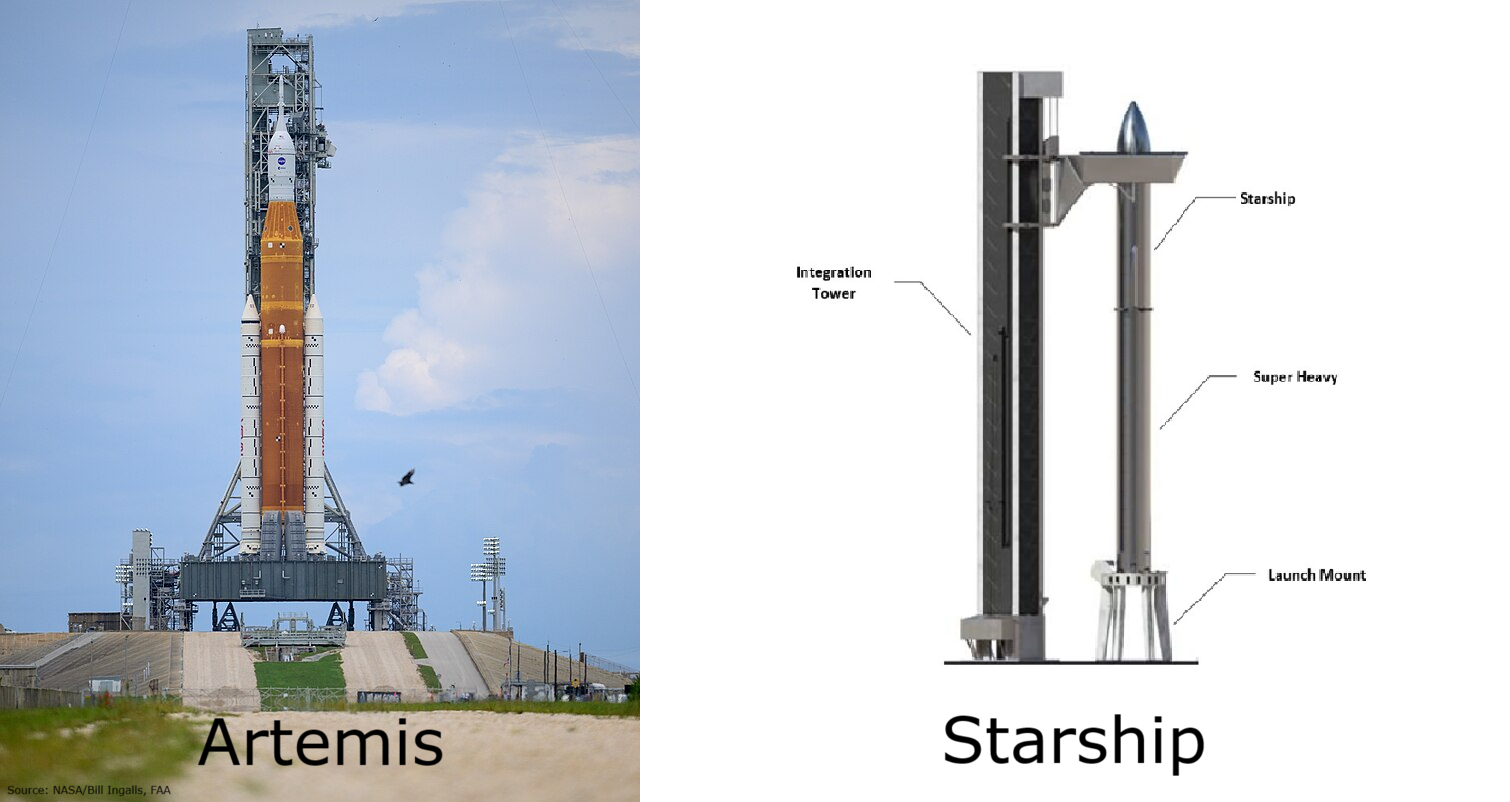In a bid to return humans to the Moon, two prominent players have emerged with contrasting approaches – NASA’s Artemis program and SpaceX’s Starship. While both aim at rekindling human lunar exploration, the divergence in their technological and economic frameworks highlights a significant discourse on the impact of political factors in space exploration decisions.
NASA’s Artemis program is often seen as a successor to the legendary Apollo program, albeit with a modern touch. However, despite being in the modern era, Artemis has chosen to leverage many components from the Space Shuttle era. This approach, while pragmatic, reflects a preference for tried-and-tested technology over innovation. In contrast, SpaceX’s Starship embodies a spirit of innovation with its fully reusable design and ambitious plans for Mars colonization.
One of the striking differences between the two is the cost. The Artemis program, by relying on single-use technology, entails a higher cost per mission ($4.1 Billion!) compared to the reusable Starship (<$10 Million eventually). This cost difference isn’t just a matter of economics; it reflects a broader issue rooted in political considerations.
The political landscape has often played a significant role in dictating the direction of NASA’s endeavors. The decision to leverage Space Shuttle components in the Artemis program isn’t solely a technical decision; it’s a political one too. Reusing old technology ensures job preservation within the aerospace industrial base, particularly in districts with strong political clout. This approach aids in securing funding allocations from Congress, which are often influenced by the desire to sustain jobs and, by extension, garner support for re-elections. This scenario often leads to a slow pace of innovation within the bureaucratic framework that governs NASA’s operations.
On the other hand, SpaceX operates with a level of autonomy that allows for more innovative risk-taking. Its emphasis on full reusability with Starship not only promises a drastic reduction in costs but also represents a shift towards a more sustainable model of space exploration.
Key points:
- Policies and protections should be built so that selfish politicians do not put their self-interest and the demands of the special interest groups before the good of the country.
- NASA’s Artemis program, being expensive, unsustainable, and technologically backward, necessitates a serious review and potential overhaul.
- Supporting the maximization of reusability, as seen in SpaceX’s approach, is crucial for sustainable space exploration.
- Regulatory frameworks should be revised to balance rapid technological progress with public and environmental safety.
- Fostering a conducive environment for private entities like SpaceX and Blue Origin et. al., is essential to maintain America’s dominance in space.
In conclusion, the journey to return humans to the Moon has unveiled not just technological but political divergences in approach. While Artemis sticks to a well-trodden path, leveraging old technology for political expediency, Starship leaps towards a new paradigm of space exploration, unburdened by the political shackles that often bind government-funded programs. The unfolding narrative of these two moonshots will not only shape the future of lunar exploration but also influence the discourse on the role of politics in propelling or hindering the march towards the stars.



















